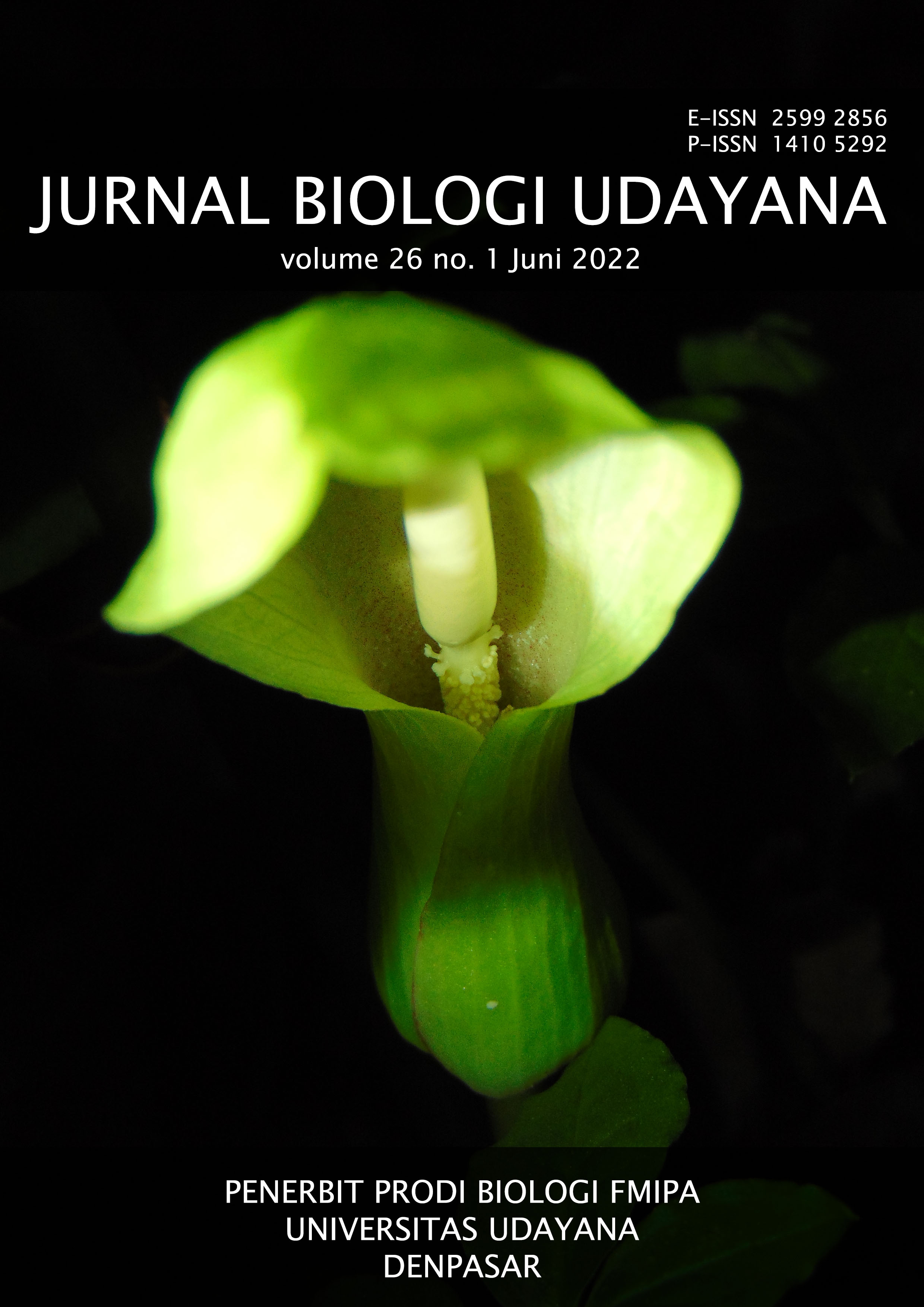Karakteristik histokimia daun Ridan (Nephelium maingayi Hiern – Sapindaceae) dari Provinsi Riau
Abstract
Ridan (Nephelium maingayi) merupakan salah satu anggota famili Sapindaceae yang tersebar di Provinsi Riau, namun tidak banyak dibudi dayakan karena buah yang berukuran kecil dan agak masam. Pada penelitian ini bertujuan untuk mengetahui karakteristik histokimia daun ridan. Senyawa metabolit yang diuji adalah tannin, flavonoid, alkaloid serta lipid. Sampel yang digunakan adalah daun ridan yang sudah dewasa. Irisan sampel dilakukan menggunakan hand microtome, dan selanjutnya diuji dengan larutan FeCl3 (tannin), NaOH (flavonoid), Wagner (alkaloid) dan Sudan III (lipid). Sampel diamati dan didokumentasikan menggunakan mikroskop digital. Uji histokimia menunjukan bahwa bagian daun ridan (N. maingayi) pada umumnya mengandung tannin, alkaloid, lipid dan flavonoid. Uji lipid menunjukan hasil negatif pada jaringan kortek dan empulur tangkai anak daun, serta pada jaringan empulur ibu tangkai daun. Hasil kajian ini memberikan informasi tambahan pada kajian histokimia anggota dari marga Nephelium.
Downloads
References
Changtragoon S, Noppornphan C, Idha W, Elina M, Nataya D, Songpol S, Winarno W, Syauqi N, Shariah U, Shukor A, Noorhayati M, William W, Pearlycia B, Sah M, Harris A, Gerten A, Lhumphet S, Sthapit B, Rao R. 2015. Diversity in Cultivated and Wild Nephelium species in South-East Asia. Indian J. Plant Genet. Resour. 28(1): 55-61. DOI 10.5958/0976-1926.2015.00008.X.
Chung K, Wong TY, Wei C, Huang Y, Lin Y. 2020. Tannins and human Health: A review. Critical Reviews in Food Science and Nutrition 38(6): 421 – 464.
Hairunisa I, Mentrai IA, Julianti T, Wikantysning ER, Cholisoh Z, Ningsih SC, Muslim MRF. 2020. Antioxidant Activities in Different Parts of Pulasan (Nephelium mutabile Blume) from East Borneo. IOP Confferences series : earth and Enviromental Science 736.
Halim HR, Hapsari DP, Junaedi A, Ritonga AW, Natawijaya A, Poerwanto R, Sobir, Widodo WD, Matra DD. 2019. Metabolomics dataset of underutilized Indonesian fruits; rambai (Baccaurea motleyana), nangkadak (Artocarpus nangkadak), rambutan (Nephelium lappaceum) and Sidempuan salak (Salacca sumatrana) using GCMS and LCMS. Data in brief 23: 1-4. DOI: 10.1016/j.dib.2019.103706.
Kopustinskiene DM, Jakstas V, Savickas A, Bernatoniene J. 2020. Flavonoid as anticancer agents. Nutrient 12(2): 457. DOI: 10.3390/nu12020457.
Kim H. 2020. Lipid Metabolism in Plants. Plants 9 : 871. 10.3390/plants9070871.
Matsuura HN, Fett-Neto AG. 2015. Plant Alkaloids: Main Features, Toxicity, and Mechanisms of Action. In: Gopalakrishnakone P., Carlini C., Ligabue-Braun R. (eds) Plant Toxins. Toxinology. Springer, Dordrecht. https://doi.org/10.1007/978-94-007- 6728-7_2-1.
Nethaji R, Thooyavan G, Mullai NK, Ashok K. 2015. Phytochemical Profiling, Antioxidant and Antimicrobial Activity Of Methanol Extract In Rambutan Fruit (Nephelium Lappacium) Epicarp Against The Human Pathogens. International Journal of Current Innovation Research 1(9): 201-206. DOI: https://www.scribd.com/document/47573 2115/00200.
Phuong NNM, Le TT, Van Camp J, Raes K. 2020. Evaluation of antimicrobial activity of rambutan (Nephelium lappaceum L.) peel extracts. Int. J. Food Microbiol. 321: doi: 10.1016/j.ijfoodmicro.2020.108539.
Sangi M, Runtuwene MRJ, Simbala HEI, Makang VMA. 2008. Analisis Fitokimia Tumbuhan Obat Di Kabupaten Minahasa Utara. Chem. Prog, 1(1): 47-53. DOI:https://ejournal.unsrat.ac.id/index.ph p/chemprog/article/view/26
Sofiyanti N, Isda MN, Fitmawati, Agesti ARA, Taufik I, Sari M, Pranata S. 2021. Phytochemical Contents of Underutilized Edible Plant from Riau Province, Ridan (Nephelium maingayi Hiern – Sapindaceae). Jurnal Biologi Tropis 21(2): 354 – 360.
Sukmandari NS, Dash GK, Jusof WHN, Hanafi M. 2017. A Review on (Nephelium lappaceum) L. Research J. Pharm. and Tech. 10(8): 2819-2827. DOI: 10.5958/0974-360X.2017.00498.X.
Thitilertdecha N, Teerawutgulrag A, Rakariyatham N. 2008. Antioxidant and antibacterial activities of Nephelium lappaceum L. extracts. LWT - Food Science and Technology 41: 2029-2035. 10.1016/j.lwt.2008.01.017.
Trimanto, Dwiyanti D, Indriyani S. 2018. Morfologi, anatomi dan uji histokimia rimpang cucurma aeruginosa Roxbl cucurma Longa L dan cucurma heyneana Valenton dan Zijp. Berita Biologi 17(2): 123 – 132.
Weston AL, Mathesius U. 2013. Flavonoids: Their Structure, Biosynthesis and Role in the Rhizosphere, Including Allelopathy. Journal of Chemical Ecology 39: 283-287. DOI: 10.1007/s10886-013- 0248-5





